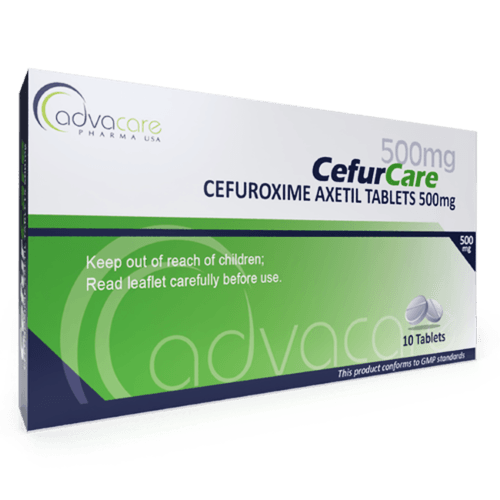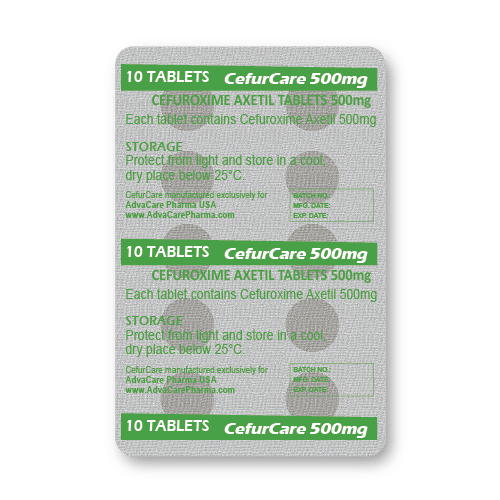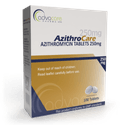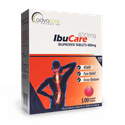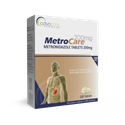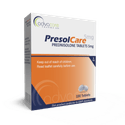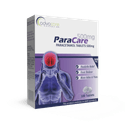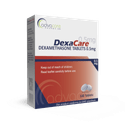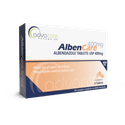- Home›
- Pharmaceuticals›
- Pharmaceutical Tablets›
- Cefuroxime Axetil Tablets
Cefuroxime Axetil Tablets
Dosage
Packaging
What is Cefuroxime Axetil?
Active Ingredients: Cefuroxime Axetil
Cefuroxime Axetil Tablets are an antibiotic drug used to treat mild to moderate bacterial infections, such as pharyngitis or tonsillitis caused by susceptible strains of Streptococcus pyogenes. This medication may also be used to treat some cases of otitis, sinusitis, and bronchitis, as well as pneumonia and gonorrhea.
Cefuroxime axetil is classified as a cephalosporin antibiotic. It works by preventing bacteria growth by stopping cell wall synthesis.
AdvaCare Pharma is a trusted exporter of Cefuroxime Axetil Tablets. Our supply chain is thoroughly vetted to ensure it meets health, safety, and environmental standards. This medication is produced in our GMP-certified manufacturing facilities in China, India, and the USA.
Why are we a leading Cefuroxime manufacturer?
As a reputable Cefuroxime manufacturer, we are dedicated to ensuring that GMP guidelines and standards strictly apply to the manufacture of our entire range of 200+ pharmaceutical treatments in tablet dosage form.
AdvaCare Pharma is an American pharmaceutical company committed to the manufacture of high-quality, affordable pharmaceuticals for a global market. The extensive international network that we partner with includes pharmaceutical distributors, hospitals, pharmacies, and a variety of other medical institutions. Our vision is to manufacture Cefuroxime Tablets, and other quality-assured oral solid treatments, that get into the hands of those that need them most.
Uses
How should Cefuroxime Axetil Tablets be used?
This medication is intended to be taken orally. Cefuroxime Axetil Tablets should be taken with food.
How should Cefuroxime Axetil Tablets be stored?
The tablets should be kept in their original packaging until use. They should be kept at room temperature in a place that is away from moisture, heat, or direct light. Keep the tablets at room temperature. Keep all medications out of the reach of children or pets. Before use, check the expiry date on the packaging and discard any outdated medicine. Consult a local pharmacist or healthcare professional for guidance on how to dispose of antibiotics such as this medicine.
What dose should be taken?
Adult Dosing Dosage may vary based on different medical indications:
- For mild to moderate bacterial infections, the usual dose is 250-500mg taken twice a day. The duration of treatment is 5-10 days. The exact dose and duration are dependent on the type of infection and severity of the illness.
- For streptococcal pharyngitis/tonsillitis, the usual dose is 250mg taken twice per day. The duration of treatment is 10 days.
- For acute maxillary sinusitis, the usual dose is 250mg taken twice per day. The duration of treatment is 10 days.
- For Lyme disease (non-neurologic), the usual dose is 500mg taken twice per day. The duration of treatment is 14-21 days. If early, localized disease, treatment should last for 14 days. If Lyme arthritis is present, the duration should be extended to 28 days. Cefuroxime is considered a first-line drug for the treatment of certain types of Lyme disease.
- For community-acquired pneumonia (off-label), the usual dose is 500mg taken twice per day. The duration of treatment should last at least 5 days. Cefuroxime is part of a multi-drug regime.
Renal Dosing Recommendations for dose frequency adjustments for patients with renal impairment are as follows:
- CrCl 10-29ml/min: The usual dose can be given every 24 hours.
- CrCl < 10ml/min: The usual dose can be given every 48 hours.
- HD: The usual dose can be given every 24 hours. On dialysis days, the drug should be given after dialysis. The usual dose should be given as a supplement after dialysis if the next dose is not due right away.
- PD: The usual dose should be given every 24-48 hours. No supplement is required.
Hepatic Dosing There are no defined guidelines for patients with hepatic impairment.
Pediatric Dosing For mild to moderate bacterial infections, the usual doses are as follows:
- children younger than 13 years old: 250mg, taken twice per day. The duration of treatment is 10 days
- adolescents and children over 13 years old: 250-500mg, taken twice per day. The duration of treatment is 10 days. The exact dose and duration are dependent on the type of infection and severity of the illness
For acute otitis media (mild-moderate infection), the usual dose is as follows:
- children 2-5 years old: 250mg taken twice per day for 7 days
- children 6-12 years old: 250mg taken twice per day for 5-7 days
For other infections, the usual dose is as follows:
- For acute otitis media (severe infection) in children ages 2-12 years old, the usual dose is 250mg taken twice a day. The duration of treatment is 10 days.
- For acute maxillary sinusitis, the usual dose is 250mg taken twice per day. The duration of treatment is 10 days.
- For streptococcal pharyngitis/tonsillitis, the usual dose for children over 13 years old is 250mg taken twice per day. The duration of treatment is 10 days.
- For Lyme disease (non-neurologic), the usual dose for children over 13 years old is 500mg taken twice per day. The duration of treatment is 14-21 days. If early, localized disease, treatment should last for 14 days. If Lyme arthritis is present, the duration should be extended to 28 days.
For community-acquired pneumonia (off-label), the usual doses are as follows:
- children younger than 13 years old: 250mg taken twice per day. The duration of treatment is 10 days
- children older than 13 years old: 250-500mg taken twice per day. The duration of treatment is 10 days
Renal Dosing for pediatrics Recommendations for dose frequency adjustments for children with renal impairment are as follows:
- CrCl 10-29: The usual dose can be given every 24 hours.
- CrCl < 10: The usual dose can be given every 48 hours.
- HD: The usual dose can be given every 24 hours. On dialysis days, the drug should be given after dialysis. The usual dose should be given as a supplement after dialysis if the next dose is not due right away.
- PD: The usual dose should be given every 24-48 hours. No supplement is required.
Hepatic Dosing for pediatrics There are no defined guidelines for children with hepatic impairment.
The dosage is based on medical condition, response to treatment, age, and weight. Refer to a doctor or pharmacist for guidelines on dosage. Do not exceed what they advise.
Who can use Cefuroxime Axetil Tablets?
Cefuroxime Axetil Tablets can be given to adults and children, but caution is advised for specific groups of patients.
Pregnant This medication may be used during pregnancy if the benefits outweigh the risks. Conflicting human data reports a possible risk of an induced abortion. In animal studies, no known risk of fetal harm has been reported at 9 and 14 times the maximum recommended human dose.
Breastfeeding Cefuroxime Axetil Tablets should only be used if the need for therapy outweighs any risks to the infant, either due to the drug or the infection. Several published case reports have indicated that Cefuroxime Axetil passes into milk by oral, intravenous, and intramuscular routes. There is no known risk of infant harm based on limited available human data. No human studies have been performed to properly assess this drug’s effect on milk production.
Children This drug is considered safe for use in children who are able to swallow tablets. Studies have not been performed to assess the safety and efficacy of infants younger than 3 years old.
Geriatric This drug is considered safe for use in elderly patients, as studies have not indicated problems specific to this population.
Other warnings
Long-term or repeated treatment with Cefuroxime Axetil has been associated with Bacterial or fungal overgrowth of non-susceptible organisms.
Side Effects
As with all pharmaceutical medicines, some unwanted effects can occur from the use of Cefuroxime Axetil Tablets.
Common side effects include, but may not be limited to:
- nausea
- vomiting
- diarrhea
- abdominal pain
- dizziness
- drowsiness
Serious side effects may include:
- signs of liver problems
- unusual tiredness or weakness
- signs of infection
- easy bruising or bleeding
- mood changes
- severe, persistent diarrhea
- signs of an allergic reaction
For a comprehensive understanding of all potential side effects, consult a medical professional.
If any symptoms persist or worsen, or you notice any other symptoms, please call your doctor immediately.
Precautions
Do NOT use Cefuroxime Axetil Tablets if:
- You are allergic to any of the ingredients.
- You have an allergy or hypersensitivity to penicillin.
Consult with your doctor about any medications, supplements, or herbal products that you are taking before your treatment. Cefuroxime axetil is known to interact with many drugs, including diuretics, blood thinners, stomach acid reducers (e.g. cimetidine, nizatidine, famotidine, dexlansoprazole, esomeprazole, lansoprazole, omeprazole, pantoprazole, rabeprazole) probenecid, and methotrexate. This is not a complete list. Alternative medications, adjusted dosages, or additional monitoring may be necessary.
This medication may not be suitable for people with certain health conditions, so it is important to consult with a doctor if you have any conditions, such as:
- renal impairment
- recent history of antibiotic-associated colitis
- history of seizures
- kidney disease
- heart problems
- history of hypersensitivity to antibiotics
Some formulations of cefuroxime axetil may contain phenylalanine or aspartame. It is advised to read the packaging or printed ingredients list before using this product.
This drug is known to cause drowsiness or dizziness. It is recommended to avoid driving or operating machinery until it is clear how Cefuroxime Axetil Tablets affect you. Limit the intake of alcohol while taking cefuroxime axetil, as this may cause more severe side effects.
Cefuroxime may reduce the efficiency of live bacterial vaccines, such as the typhoid vaccine.
References
Bacteriological eradication of streptococcus pneumoniae from patients with acute exacerbations of chronic bronchitis: cefuroxime axetil versus cefixime
This study includes an evaluation of the bacteriological eradication rates of Streptococcus pneumoniae from the sputum of patients experiencing acute exacerbations of chronic bronchitis either with cefuroxime axetil 250mg twice daily or cefixime 200mg twice daily.
It included only hospitalized patients in this multicentre, double-blind, randomized, parallel group with patients giving written informed consent initially. The participants from this study met the WHO definition of chronic bronchitis, were aged 30-75 years, and had a high probability of S. pneumoniae infection based on initial sputum Gram stain.
The results showed that S. pneumoniae was eradicated more rapidly following cefuroxime axetil administration than after cefixime and this difference was statistically significant (p=0.002) at 2-4 days post-treatment.
The conclusion is that patients showed 94% response to cefuroxime axetil compared with 71% response to cefixime (RR 6.39:1). Cefuroxime axetil is proven to be more efficacious than cefixime in patients with S. pneumoniae.

You might be interested in...
Why AdvaCare Pharma?
As an industry leader, we are aware of our responsibility to provide affordable and sustainable solutions to improve healthcare worldwide.
